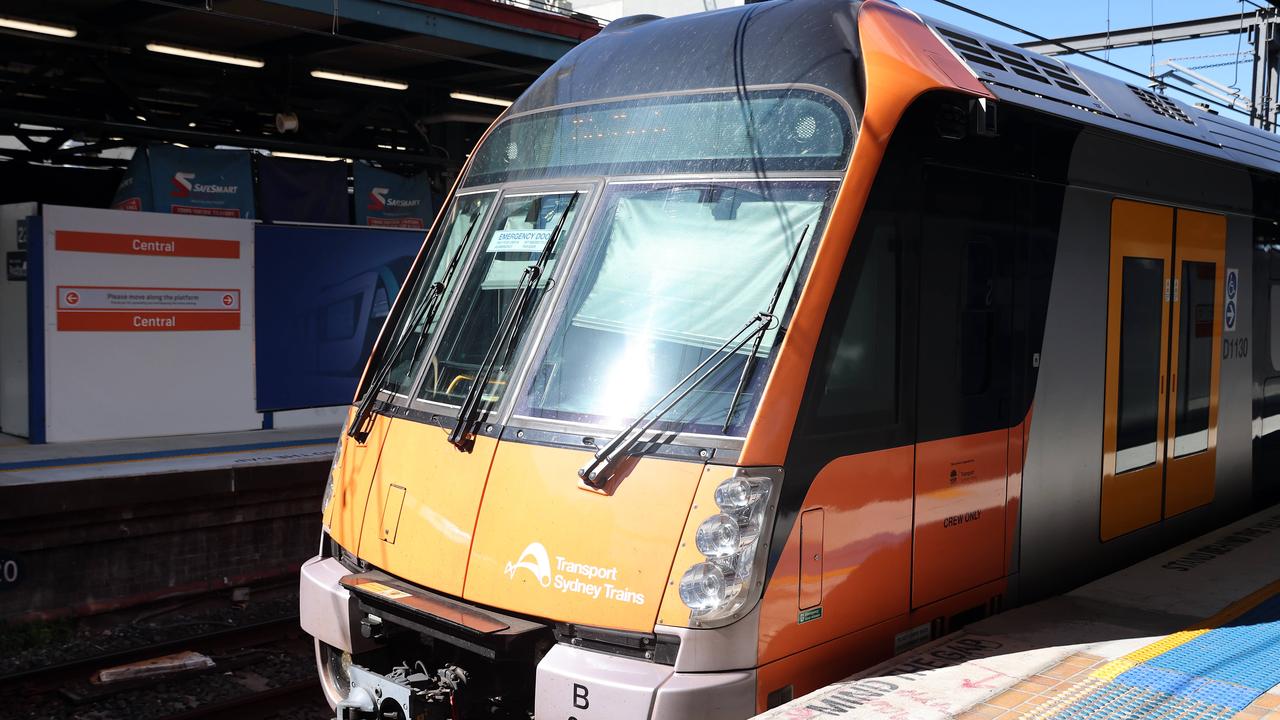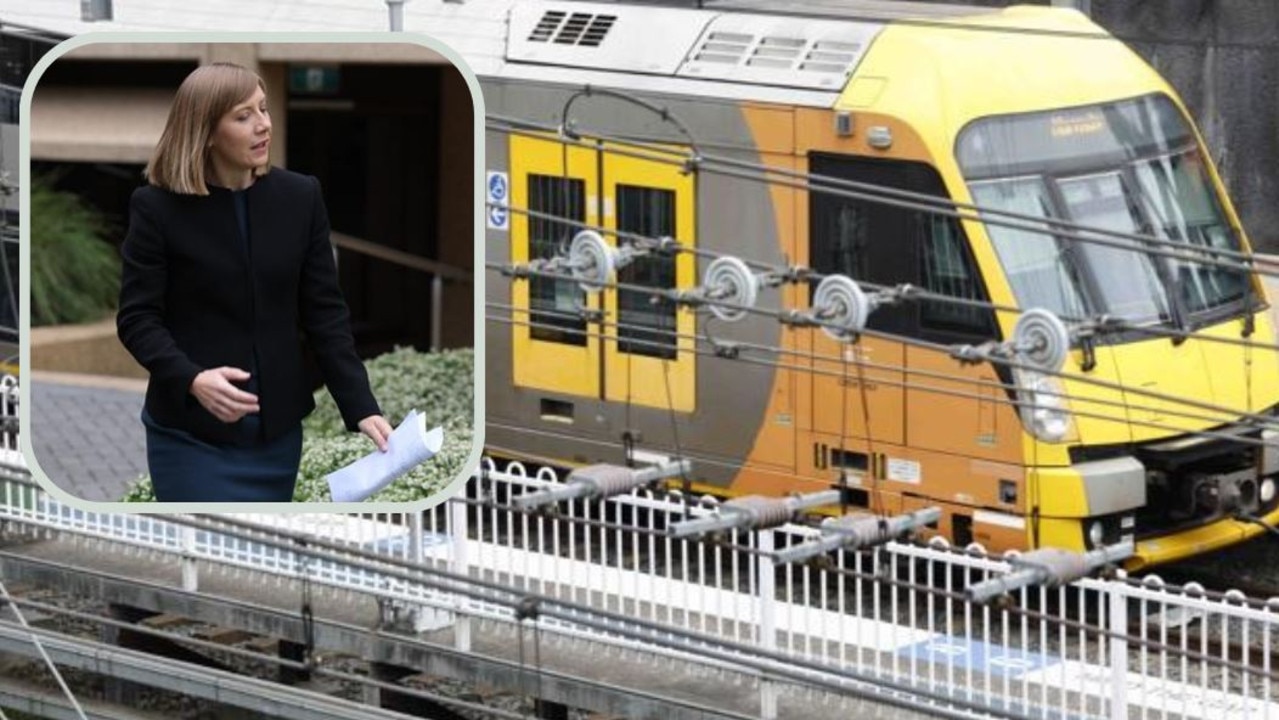Special report: A day in the lives of NSW’s elite paramedics
The Sunday Telegraph was given an exclusive look behind the scenes with a NSW Ambulance team, where we witnessed the painstaking efforts of the crew to save a man’s life.
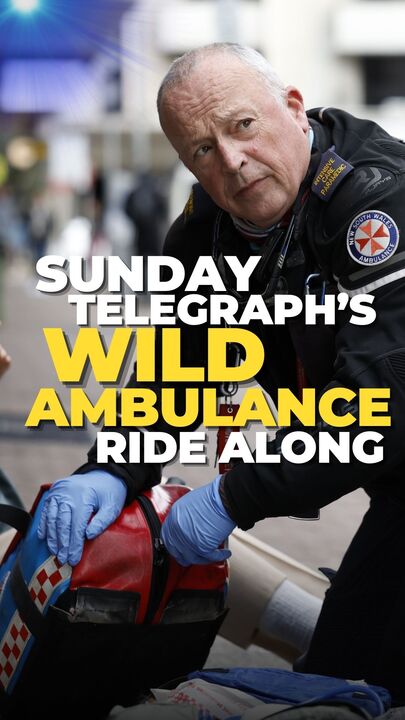
NSW
Don't miss out on the headlines from NSW. Followed categories will be added to My News.
Wrong side of the road, sirens blaring, A NSW Ambulance vehicle makes it from Sydney’s inner west to Bondi in a matter of minutes for a medical emergency.
Inspector Mick Corlis is composed at the wheel, despite motorists heading straight towards him - not always making the smartest choices in an emergency, not always slowing down, pulling over to the side.
Then there are the pedestrians, headphones in their ears, astonishingly oblivious to the flashing lights and noise, some stepping out onto the roadway without even a glance to their left or right.
Inspector Corlis honks his horn, still no response as the pedestrians wander across the road, but he has his wits about him, avoids them with ease.
The experienced Duty Operations Manager is calm in the chaos.

So are the hundreds of paramedics across the state called to help people with breathing problems, falls, mental health issues - to those staring down death after a major heart attack, stroke, or a violent assault or car crash.
The obstacles they face just getting to the scene makes the latest Bureau of Health Information statistics quite remarkable.
The latest quarterly report shows a 36.5 per cent increase in the number of priority 1A responses for NSW Ambulance, compared with the same quarter in 2023.
While jobs are definitely on the rise, it’s important to note this increase is also being driven by a recent broadening of the priority 1A category to include a wider range of clinical conditions, such as breathing problems and overdoses.
There were 385,345 NSW Ambulance responses in the April to June 2024 quarter, the most since the Bureau began reporting, and an increase of 27,854 responses, or 7.8 per cent, compared with the same period in 2023.
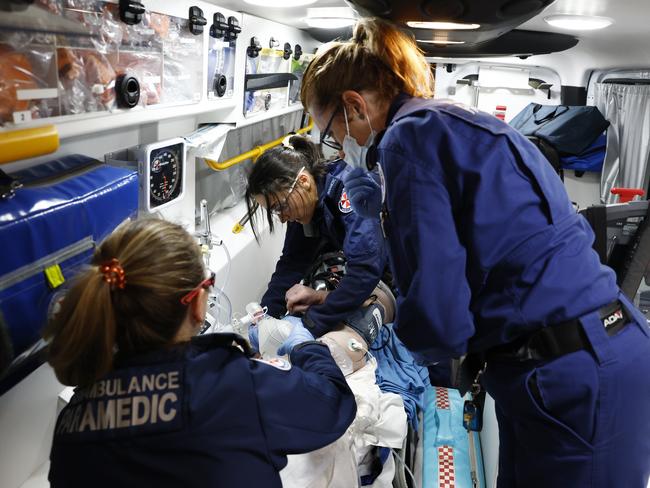
In the last financial year, they responded to 117,116 falls, 102,363 people having breathing problems and 102,195 people experiencing mental health issues.
Response times remain stable even though the number of patients taken to hospital has increased.
Despite the record level of demand, the median response time for the priority 1A category was 8.4 minutes, which is within the 10-minute benchmark.
On the day the Sunday Telegraph took an exclusive look behind the scenes with a Sydney team, we witnessed the painstaking lengths the crew goes to save a man’s life.
The man had checked into a Kings Cross Hotel and hadn’t been seen for a couple of days when the reception worker decided to raise her concerns. She had a hunch.
Police and NSW Ambulance rushed to the Triple 0 call mid morning on a regular Tuesday.
Up four flights of stairs in a lonely room they found the man, his body in spasms. He was foaming at the mouth.

“The first report from the paramedics at the scene is we think it’s a drug overdose,” Inspector Corlis explained.
“A man in his 30s on the top floor, the staircase very narrow. Police Rescue has just arrived and will go up and have a look,” he said.
Minutes later as the paramedic team treated the man in his hotel room the Inspector had to weigh up “the load and go” time, to transport the man to St Vincent’s Hospital versus the time it will take for a crew to arrive to sedate and intubate him here.
In a split second moves were afoot to get the gravely ill man onto a narrow stretcher used by Police Rescue in curly rescues, to get him down the narrow stairwell and into the emergency department at St Vincent’s where specialist team was waiting.
Inspector Corlis and his team spent the next frantic half hour helping calm the man as emergency staff took over his care thanks to a detailed handover of symptoms and circumstances.
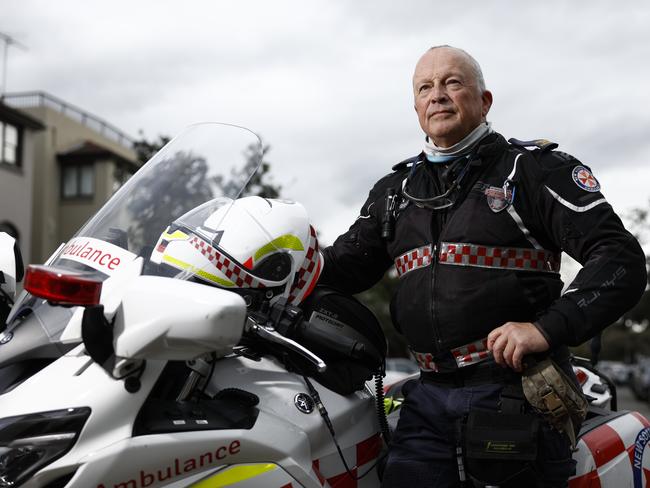
“We don’t often follow up on jobs, we do so many jobs and we hope for the best in all of them. Let’s hope this man now gets his second chance and has a reason to live,” he said.
Paul Smith - an Intensive Care Paramedic in the Motorcycle Response Unit - certainly helps with response times, often turning up first thanks to his high-powered motorcycle.
“I’ve been on a bike since the end of 1997, my colleague abroad tells me that makes me the longest serving in the world,” he said.
We meet Smith at a job in Bondi where he has beaten the ambulance crew and is already tending to an elderly man who has had a bad fall on the footpath.
“Quite we are often mistaken for police. When you call an ambulance you think an ambulance will turn up, you don’t expect me knocking on your door,” said Smith, kitted up in riding leathers.
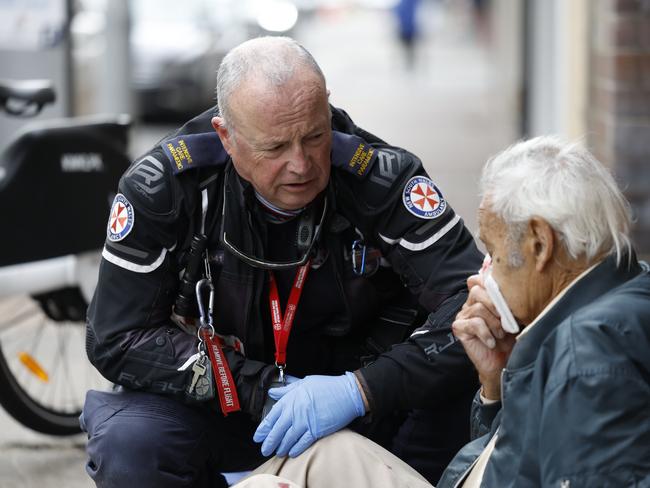
He carried everything he needed for first response treatment and pain management in his bike compartment.
“Obviously there is no room for spine boards or collars or sprints. The idea is we get there fast to control pain and the guys back us up.”
Paramedic Smith is all too conscious of the fact that time saves lives, remembering a hairy job in Darlinghurst a little while back.
“A guy was stabbed in the neck in Darlinghurst. He had severe injuries to his neck and it was hosing out blood.
“I got there quickly, shoved my fingers in the hole, then wrapped a dressing around it and got him to “resus”. He was a young chap. It was lucky he survived. That turned out to be a good day.”
“He’s a young man so his chances were good because of his youth. He survived, he probably wouldn’t have lasted another 20 or 30 seconds because he was losing so much blood.”
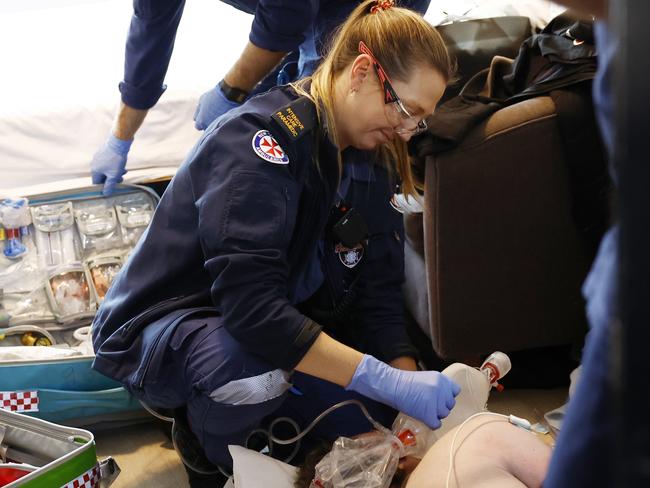
NSW Health Minister Ryan Park said he was “so grateful for the hard work of our dedicated Paramedics who are confronted with record demand”.
“In the face of this record demand, I’m really encouraged by the incredible professionalism and the outstanding care clinicians and control centre staff continued to provide to the community,” the Minister said.
An additional 2,500 staff are headed across NSW as part of the $1.76 billion Strategic Workforce and Infrastructure Team program, including 500 paramedics to rural and regional areas, to boost emergency and mobile healthcare for our metropolitan and regional communities.
The program is also delivering 30 new ambulance stations to help save lives and provide critical emergency care across NSW.
Do you have a story for The Daily Telegraph? Message 0481 056 618 or email tips@dailytelegraph.com.au
More Coverage
Originally published as Special report: A day in the lives of NSW’s elite paramedics



